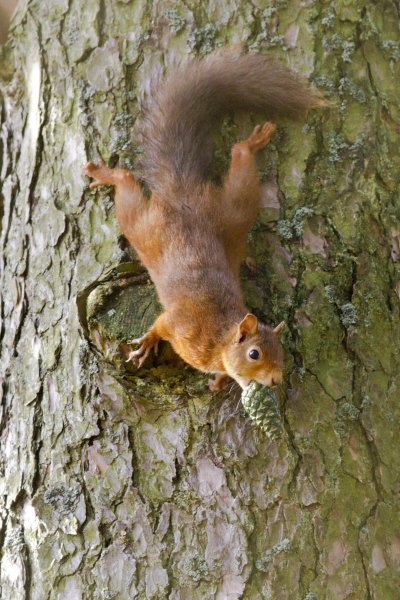Original Author: Dr Mel Tonkin, Project Manager
A huge volunteer effort is helping Saving Scotland’s Red Squirrels get an accurate picture of red and grey squirrel distribution in Scotland.
Despite the exceptionally cold, wet winter and late spring this year, our squirrel presence/absence surveys began as usual in March. We know squirrels must feed daily, but we found they were slow to visit the feeder boxes, seeming to prefer to keep exposure to the wet and cold to a minimum. As a result, some monitoring sites only registered the presence of squirrels in the last fortnight of the six-week surveys.
Even so, for surveys in project areas north of the Central Belt, initial results suggest red squirrels are still as widespread as last year. Conversely – from our results so far – grey squirrel presence seems well down on last year; however, it is still too early to draw firm conclusions.
In the south of Scotland, more than 100 new tetrads (or 2km square survey areas) were set up and surveyed for the first time this spring. Initial assessments of red squirrel distribution are encouraging, with the species noted at several key areas, including along the River Tweed in Berwickshire where squirrelpox has affected red squirrels in the past.

To the 130 or so volunteers that helped with the surveys, we say a huge thank you for the magnificent effort; we could not have covered the huge survey area without you. Full results of these surveys will be published on the website when they are ready.
Also under way is our second year of squirrelpox monitoring. Last year, grey squirrel blood samples were collected from sites at regular intervals across the landscape in order to establish the distribution of the disease. By repeating the sampling each year, we will be able to track any changes in its spread, ensuring that our containment efforts are directed at the right places to prevent transfer to the uninfected grey squirrels of the Central Belt, which in turn would threaten Scotland’s core red squirrel populations further north.
We have been assisted in these efforts by some clever mathematical modelling developed by scientists at Heriot Watt University, which helps represent the way squirrelpox virus spreads through the landscape. The model used our existing data to predict the most likely rates and routes of disease dispersal and the way it is affected by grey squirrel control. This exciting collaborative work gives us new tool to help us contain this devastating disease.
